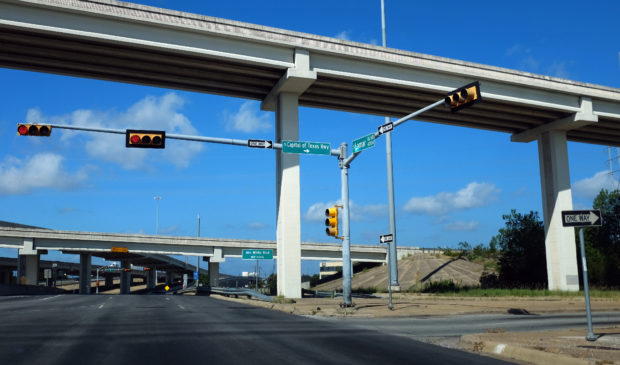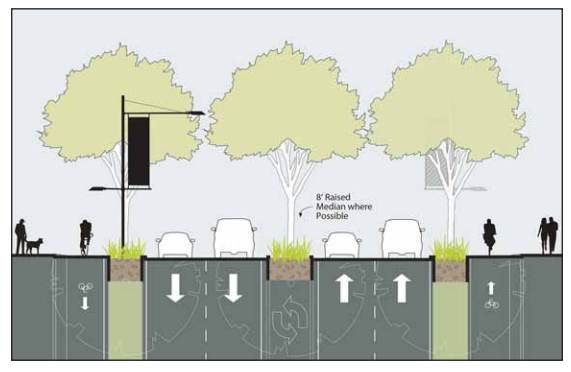Newsletter Signup
The Austin Monitor thanks its sponsors. Become one.
Most Popular Stories
- Latest State of Downtown report shows the city core’s businesses and housing are in transition
- Cap Metro to shelve 46 new electric buses for a year after manufacturer bankruptcy
- Jesús Garza disputes allegation that he violated city ethics rule
- ECHO’s $350M plan offers to ‘effectively end’ homelessness in Austin
- Mobility Committee hears public concern regarding expansion of MoPac
-
Discover News By District

In a city with many fatal car crashes, what will a $720 million bond do for road safety?
Tuesday, October 25, 2016 by Audrey McGlinchy, KUT
One hundred and two people died on Austin’s roads last year – the most in the city’s recorded history. There was the young woman killed around 5 a.m. while walking on the Interstate 35 frontage road; the 55-year-old unnamed bicyclist hit by a truck on Brodie Lane.
Austin voters are now being asked to approve a $720 million bond to fund road improvements, bike lanes, sidewalks and urban trails. The big selling point, at least from Mayor Steve Adler and the pro-bond political action committee Move Austin Forward, has been congestion reduction.
But given Austin’s record-breaking year of traffic deaths, local safety advocates are wondering what’s to ensure that road changes don’t equate to more fatalities. Vision Zero ATX, a local road safety group, recently declared a neutral stance on the bond.
“The corridor plans, in theory, could be a huge boon to traffic safety,” said Nic Moe, chair of the Vision Zero ATX board. By KUT’s rough tally, at least 13 of last year’s 94 fatal crashes occurred on corridors to be funded by the bond money.
“A lot of these corridors are along stretches of roads that we’re all familiar with, such as Lamar and East Riverside and Slaughter Lane, that are particularly dangerous for all road users, and they see a lot of serious crashes,” said Moe.
There are some definites
Voters concerned about safety can count on at least some money if the bond passes.
“There’s a $15 million allocation specifically for fatality reduction strategies,” said Move Austin Forward Campaign Manager Jim Wick. “What that really is dealing with (is) our most dangerous intersections.”
Wick is right. While it’s a small portion of the total bond amount, $15 million has been set aside by City Council to fund changes at 28 intersections deemed by the city to be some of Austin’s most dangerous, including Airport Boulevard at Martin Luther King Jr. Boulevard and North I-35 at Cesar Chavez Street. (See map below.)
And then there’s the money that could ensure safer conditions for pedestrians: $37.5 million for the city’s Sidewalk Master Plan, to be distributed based on need, plus $27.5 million for Safe Routes to School, to be distributed evenly among Council districts.
“That will improve walking safety through new sidewalks and safer crosses,” said Tom Wald, a member of the city’s Pedestrian Advisory Council.
Plus, the city recently adopted some guiding principles when it comes to safety. In 2014, City Council approved a Complete Streets Policy, which priorities safety for pedestrian and bicycle infrastructure in transportation projects. Just this year the city adopted a Vision Zero Action Plan. The road safety plan gets its name from the goal of achieving zero traffic deaths on the city’s roads.
The real work comes later
Moe said that at times, it can appear that reducing congestion is antithetical to enhancing road safety.
“The problem is that there are a lot of other items, such as funding for corridor plans, that primarily seek to increase car throughput, which is great if your goal is to increase more cars getting through,” said Moe. “But it’s not necessarily great if you’re trying to make safe environments for people trying to get around at all, in any way.”
However, Wick argues that reduced congestion often means heightened safety. (The U.S. Department of Transportation appears to agree.) Take raised medians, for example. Several of the corridor plans, including the plans for Airport Boulevard and South Lamar, recommend building raised medians between north and south traffic lanes – often in place of center turning lanes.
“It primarily helps congestion by reducing what are called ‘conflict points,’” said Wick. “The more conflict points you have on a roadway, the more likely it is for there to be a crash.”
And with crashes come traffic delays.
But because the $482 million set aside for the city’s corridor plans will not fund these improvements in full, Moe said the feeling he has – and the one he gets from fellow safety advocates – is that the real advocacy work will begin if the bond passes.
“That sounds right,” said Wald. “There’s that wiggle room.”
“If this bond passes, there are still a lot of questions that need to be answered and a lot of political fights that will still need to happen to determine what that actually means and where this money will be going,” said Moe.
Photo by Jorge Sanhueza-Lyon/KUT News. This story was produced as part of the Austin Monitor’s reporting partnership with KUT.
The Monitor’s work is made possible by donations from the community. Though our reporting covers donors from time to time, we are careful to keep business and editorial efforts separate while maintaining transparency. A complete list of donors is available here, and our code of ethics is explained here.
You're a community leader
And we’re honored you look to us for serious, in-depth news. You know a strong community needs local and dedicated watchdog reporting. We’re here for you and that won’t change. Now will you take the powerful next step and support our nonprofit news organization?








